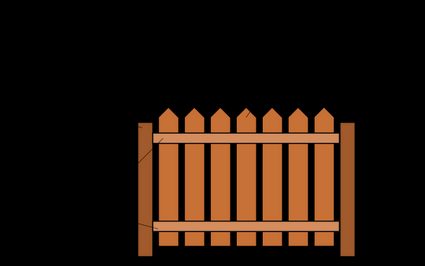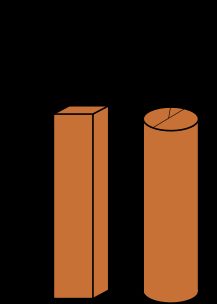Fence Calculator
This fence calculator will be of great use to you if you want to build a fence on your own. Use it to plan your work by estimating the correct amount of fencing materials that you will need to complete your privacy fence project. Thanks to our fence estimator, you will know exactly what to buy and how much of it you need, which will answer a pressing question on your mind, how much does a fence cost?
How to use the fence calculator?

Although our fence estimator may seem complicated at first, in reality, it is quite a simple tool. Read this short set of instructions to learn how to use it:
-
Start by deciding how long your fence is going to be and how much space you want between posts. Typically, the post space is somewhere between 6 and 8 feet; or 2 and 5 meters, depending on your preference. Put the fence length and the space between posts in the first section of the fence calculator, and it will return both the number of posts you should buy and the number of sections defined by the number of posts, which is a value we will need later on.
-
Put in the height of the fence in order to see the length of the posts you need to buy. That is important because at least ⅓ of every post should be buried in the ground and secured with concrete.
-
Put in the number of horizontal rails per section of the fence. Two rails per section is the most common number, but it depends on the style of the fence. You will then get the total number of rails you need to buy. A rail is the same length as a section.
-
Put the width of a single picket and the spacing between the pickets in the third section of the fence calculator in order to determine the total number of pickets.
-
As every post needs to be secured so that your fence doesn't fall over, you need to put the posts in holes filled with concrete. In order to calculate the volume of concrete needed to do that, input either:
- The diameter of your post for cylindrical posts; or
- The width and thickness of the post for cuboid posts.

Equations used in the fence calculator
If you want to know how we calculate the amount of fencing materials you need, here is a list of the equations we used:
Formulas for concrete volume
The volume of the hole minus the volume of the part of the post that's underground (buried post volume) results in the concrete volume for one post:
Once you know the concrete volume for one post, multiply it by the number of posts, and you'll get the total concrete volume for the entire fence.
To calculate the hole volume and the buried volume, we'll need the post depth, which must be at least ⅓ of the post length:
Now, let's look at how to calculate the volumes for the two types of posts.
Cuboid post
For the cuboid post, the recommendation is to use a rectangular hole with three times the width and thickness of the post:
From the formulas above, we can obtain a final and easier-to-calculate equation for the concrete volume:
Remember that you must multiply the concrete volume above by the number of posts to obtain the total concrete volume.
Cylindrical post
For the cylindrical post, we do something similar: use a hole whose diameter is three times the post diameter:
From the two formulas above, we can also obtain an easier equation for the concrete volume:
Again, multiply the concrete volume above by the number of posts to obtain the total concrete volume.
💡 Remember that
Using the fence estimator - example
To make the process of estimating fencing materials even clearer, let's go through an example together.
Let's say we want to build a fence that's 1,000 feet long, with 7 feet in between each post and a height of 10 feet. We will start by calculating the number of posts and how long they should be:
As we need to round the number up, the number of posts is 144. This gives us 143 sections.
Let's say we want our fence to have 4 rails per section. In this case, the total number of rails we need is:
Now let's move on to the pickets. Let's say we will build our fence out of 5-inch-wide pickets with 1 inch of spacing. As 1,000 feet equals 12,000 inches, the total number of pickets will be:
All we need to do now is to estimate how much concrete we will need to secure the posts to the ground. Let's say we are using cuboid posts that are 5 inches wide and 4 inches thick. Remember to change the height of the post into inches for this calculation - 15 feet equals 180 inches. ⅓ should be buried in the ground, so the height of the buried part or post depth will be 60 inches. Let's calculate the concrete volume required for one post:
Finally, multiply the result by the total number of posts:
Concrete is usually given in cubic yards, so after conversion, we see that we will need 29.63 cubic yards of concrete.
Thanks to our calculations, we now know that if we want to build our 1000-feet-long, 10-feet-high fence, we will need to buy the following:
- 144 15-feet-high posts;
- 572 rails;
- 2,000 pickets; and
- 29.63 cubic yards of concrete.
A tip for buying fencing materials
Even professional construction workers are bound to make mistakes sometimes. After all, we are only human. Always keep a mistake margin in mind. It is generally recommended to buy about 10% more fencing materials than you actually need in case you need to correct a mistake. If your fence ends up perfect on the first try, the additional materials won't go waste anyway - you will have them ready for any future repairs.
Why have a privacy fence around your property?
You might wonder why you should even bother building a fence. There are a number of reasons why having a fence around your property is a good idea:
-
Privacy. As the name itself suggests, a privacy fence will allow you to relax in your garden without having to worry about any prying eyes.
-
Protection. A privacy fence will not only keep your children and pets within a safe area but also will keep stray animals out. It will also serve as a great windbreaker, allowing you to enjoy your time outside without worrying about wind chill.
-
Decoration. Your privacy fence can enrich the look of your garden. If you want your garden as beautiful as possible, consider using some of our gardening calculators, e.g., plant spacing calculator or mulch calculator, according to your needs.
-
Noise isolation. If you live close to a street or some facility that produces a lot of noise pollution, a privacy fence is one of the easiest ways to deal with it.
-
Tradition. While this may not be an entirely serious reason, the fact remains that, to many, a nice white picket fence around your property symbolizes achieving the American Dream.

Why build a privacy fence on your own?
There are a number of reasons why you should consider building a fence on your own rather than getting a contractor to do it for you. Here are just a few:
-
It's cheaper. By using this fence calculator to find out the amount of fencing materials you need, you don't need to buy anything else! With no construction workers or designers to pay, you can save loads of money.
-
You're free to do it the way YOU like it. As long as you have all the right permits, you are the only one you'll have to answer to regarding the fence's look. No one will try to convince you to do it in a more "fashionable" way or tell you how to build a fence that they think would be better (not including your other half).
-
It's satisfying. Building a fence may not sound like a very enjoyable activity at first, but here's the thing about DIY - it can give you immense satisfaction. Creating something with your own hands rather than getting it done for you can be an enriching experience, and the pleasure of a job well-done will come back to you every time you see your finished project.
-
It's something you can be proud of. Building something on your own requires a lot of skill. In this case, you need to know how to build a fence, calculate how much a fence costs & the amount of fencing materials you need, and, most importantly, do the actual handiwork yourself. Learning to do all these things is definitely a reason to be proud of yourself.
-
It's healthy. After all, building a fence is a physical activity, and as long as you are in good health, there is no such thing as too much of that. While building a fence, you will also get to spend time outside.
Saving on DIY house renovation
Are you keen on saving money and enjoying DIY? Learning how to build a fence is not the only thing you can do. There are many other projects you can do by yourself, and we have a number of tools other than this fence calculator, which you may find useful. Consider, for example, painting your walls to give your place some fresh energy. Try using our paint calculator or our deck stain calculator to make sure you get the right amount of paint and enjoy a rewarding, creative activity. Another quick and easy way to do that is to decorate your walls with wallpaper - check how much wallpaper you need and go looking for the perfect pattern in your local store. If you already have some experience in house renovation, you can even consider tiling your floors on your own.
FAQs
Why do I need a fence for my house?
You do not necessarily need a fence, but it might mean that you do need it if you have thought of it.
There are various reasons you may use as a base for your decision on having or not having a fence:
- Privacy;
- Protection;
- Decoration;
- Tradition; and
- Noise isolation.
Some people even consider it a fantastic outdoor DIY project that you could take up this summer.
How many posts do I need for an 8-meter fence?
For an 8-meter-long fence, you need five posts having four sections if the post spacing is 2 meters. This estimation is based on a simple formula:
Number of posts = (Fence length / Post spacing) + 1
One thing to remember is that whenever you have your answer in decimals, round it up.
How much fencing material should I buy?
Carefully measure or seek the help of a fencing calculator to determine the size and dimensions of the fence you ought to make. Based on the precise calculations, purchase the fencing material.
Whether you are building your own fence as a DIY project or getting a new one installed by a professional, the amount of material you need to buy must be pre-calculated so that there is no waste or leftovers, which would be an unnecessary waste of money.
What is a good distance between fence posts?
The appropriate distance between the fence posts is crucial in its stability and design. If the distance is too much, then it won't be strong enough to hold itself, and if the posts are tight, it might not just look weird but be a waste of expensive material. The standard fence spacing, optimum for privacy and general purpose, is 2-3 meters.